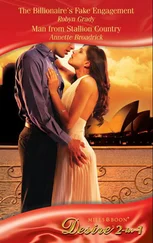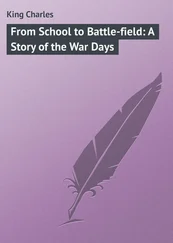4. THE SEPARATISTS’ FIRST CAPITAL
“VLADIMIR VLADIMIROVICH, WE are a small provincial town in the Donetsk region that is under attack from fascists and imperialists of all kinds and nationalities. They kill our brothers and hurt our citizens. They carry on military actions against our people. Therefore I would like to turn to you, Vladimir Vladimirovich: I ask you to consider, as soon as possible, bringing in a peaceful military contingent that would protect peace-loving residents of the Donetsk, Kharkiv, and Luhansk regions from the aggression of Right Sector and the National Guard. They represent nothing but death. They want to turn us into slaves, they don’t talk to us but simply kill us.” Thus states the “people’s mayor” of Slovyansk, Vyacheslav Ponomarev, during the press conference on April 20, 2014. On that day there had been a shooting at one of the militants’ checkpoints. The supposed attacker was the Right Sector.
I arrive in Donetsk in mid-April in the morning. From there I try to go further—to Slovyansk. You can buy tickets without any problems. The train is almost empty. There are a few people in the car: a married couple traveling to Dnipropetrovsk, three other journalists—two Belarussians and one Pole—and Maya, a forty-year-old supporter of the Donetsk People’s Republic.
“The train is not stopping in Slovyansk. The station is closed. The nearest stop is Krasnyi Lyman,” explains the conductor. He asks us if we want to go. Do we have an alternative? After all, it is easier to reach Slovyansk from Krasnyi Lyman than from Donetsk. This is important for the journalists. And it is easier to reach Kramatorsk where Maya is headed. From time to time Maya joins the conversation to tell us about the successes of the “volunteers,” whom she is enthusiastically cheering on.
“Not bad. They have taken the side of the nation,” she says, commenting on the news that part of a Ukrainian landing force has joined the separatists. Maya has no doubts that Donbas should become part of Russia. “This is our future,” she declares.
After three hours we get off the train in Krasnyi Lyman. We walk a few steps away when we hear the conductor shouting: “Things have changed, we are going to Slovyansk after all! Come back!”
We occupy the same seats again and drag on for one more hour. The entire trip from Donetsk to Slovyansk took four hours. The day before an express train had gotten there in an hour.
Slovyansk, with its population of slightly more than one hundred thousand residents, is a perfectly stereotypical post-Soviet city. It is ugly, gloomy, and totally uninteresting. What may make it distinctive are the nearby salt lakes that tourists seeking relaxation used to visit. Another distinguishing feature is Sviatohirsk with its Russian Orthodox monastery. It was made famous by Viktor Yanukovych who would go there to pray.
“When everything is peaceful, you have to go there. This is a wonderful place, but you only show the worst,” one of the residents encourages the journalists.
“We will definitely go,” I reply together with the other reporters, but it is very unlikely that we will go back to Slovyansk soon after all these events.
The city’s main public space, October Revolution Square, combines everything that represents the post-Soviet ideological mishmash. What stands out first is the Lenin monument. It isn’t as impressive as the monuments in other large cities. Lenin in Kharkiv is proud, with his chest stuck out and his arm stretched forward. Monumental, placed on a high pedestal with his head raised, he looks inspired. He convinces you that such a leader should be followed to the other end of the world. Lenin from Slovyansk is so… unsure. Nothing about him resembles an intellectual or revolutionary. He stands there in his flat cap and buttoned-up coat. He has one hand in his pocket. In the other hand he holds a piece of paper. He appears completely unremarkable. There is an Orthodox church on his right. Its golden cupolas are shining. It gives the impression of being the newest building on this square. There is the City Council behind Lenin—a huge modernist grey concrete lump, like so many others in the former Soviet Union.
The square is surrounded by places to eat and drink, shops, and banks. This concrete space is lightly garnished by a little bit of green and benches. Each bench has a small plaque attached with the information that it was sponsored by Deputy Oleksiy Azarov, the prime minister’s son. Thanks to Oleksiy the residents can also enjoy wireless internet. Of course, before you get connected, a window pops up and you know whom you should thank for this technological marvel. The icing on the cake is a brightly painted rooster in a glass coop standing on the square. On Independence Day in 2013 in Kiev this rooster represented the city during the rooster parade. Evidently, the city authorities liked it so much they decided to keep it. Now it proudly presents itself on the main square.
When I arrive in Slovyansk, I notice that a slight change has entered its usually monotonous life. The entrance to the City Council building is surrounded by sandbag barricades. A few “greens” are wandering around. Next to them a banner is hanging: “Popular Mobilization of Donbas.” The Ukrainian flag has disappeared from the edifice, replaced by the Russian. Only the flag of the Donetsk Region has stayed in place: a rising sun symbolizing Eastern Ukraine, black water standing for coal, and the Azov Sea in which sunbeams are reflected.
Barricades of sand, tires, and wood appeared on the nearby streets. Banners were hung on them: “Junta, get lost,” “Power to the people” and “We are against fascist occupation of Donbas.” The barricades were placed at the police station, the Security Service of Ukraine building on Marx Street where “greens” had their headquarters, and around the city. At each barricade people coming and going had their documents and car trunks checked.
“Chechen, the journalists have arrived!” a masked man at one of the checkpoints is shouting. He is calling the people who are standing on the side of the bridge. “Chechen” is approaching the car I’m in with two other media employees.
“Poland? You are our enemies,” says Chechen adjusting his rifle. After this not so nice introduction he lets us go free.
A group of residents has gathered at the nearby playground near the City Council. They are listening to the conversations between the journalists and the “volunteers,” trying to comprehend what is happening here. Armored personnel carriers with Russian flags arouse their confidence and admiration.
“Sir, could you pick up my kid? We’ll take a picture,” the child’s mother asks a guy in a balaclava holding a grenade launcher. He is sitting on one of the vehicles. He lifts the boy up, puts him on the carrier, and takes his hand. Somewhere else a “green” gives a rifle to a kid and they both pose for a picture, smiling.
You may get the impression that for the residents the separatists are some kind of traveling circus that has stopped in their city today. The separatists themselves help to create such an image: in the parking lot behind the City Council they are racing like crazy in their APCs. This show has attracted the most attention among the residents. Finally, one of the vehicles breaks down and the spectators leave the lot.
“We thank you boys!” says an elderly woman with tears in her eyes, when she sees the Russian flag. After posing for pictures, a few snapshots, and some chatting, people can go back to their daily routines. Although some people have gone home, social life in October Revolution Square is thriving. Every now and then somebody drinks beer from a large plastic bottle. Children are having fun on the playground. People are conversing as in the past, only the subject has changed. Now all of them are talking about the war. However, it is not clear who is fighting whom. With time—thanks to the Russian media—the narrative about a civil war will prevail. Donbas is fighting the rest of Ukraine.
Читать дальше

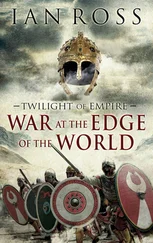
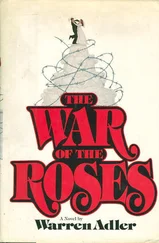
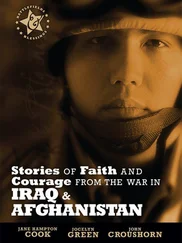
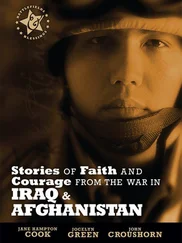



![Theresa Cheung - The Dream Dictionary from A to Z [Revised edition] - The Ultimate A–Z to Interpret the Secrets of Your Dreams](/books/692092/theresa-cheung-the-dream-dictionary-from-a-to-z-r-thumb.webp)
